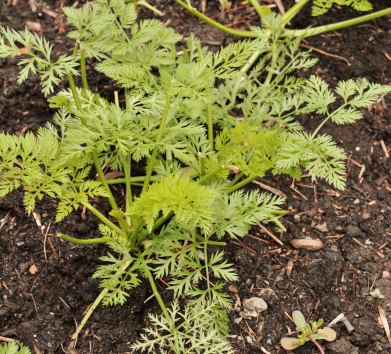From the report «Weed detection in 3D images» of A. Piron, F. van der Heijden, and M. F. Destain, published at Precision Agriculture
Machine vision has been successfully used for mechanical destruction of weeds between rows of crops. Knowledge of the position of the rows where crops should be growing and the assumption that plants growing outside such positions are weeds may be used in such systems. However for many horticultural crops, the automatic removal of weeds from inside a row or bands of crops in which the weeds are mixed with plants in a random manner is not solved.
The aim of the study was to verify that plant height is a discriminating parameter between crop and weed at early growth stages, as weeds and crops grow at different speeds.
Plant height was determined by using an active stereoscopy technique, based on a time multiplexing coded structured light developed to take into account the specificities of the small scale scene, namely occlusion and thin objects, internal reflections and high dynamic range.

The study was conducted on two carrot varieties sown at commercial density. Different weed species were present at the time of data acquisition. To accurately represent plant height taking into account the ground irregularities, a new parameter called ‘corrected plant height’ was computed. This parameter was the distance between plant pixels and the actual ground level under them obtained by fitting a surface and seen from a reconstructed point of view corresponding to a camera’s optical axis perpendicular to the ridge plane.
The acquired stereoscopic data were classified to differentiate weeds from crop. This was done by using quadratic discriminant analysis with two combinations of two parameters. The first parameter was, for each combination, the number of days after sowing. The second parameter was, in one case, the distance from measurement device to plant pixels and, in the other case, a corrected plant height parameter that took into account camera placement and ground irregularities.
The classification accuracy was only 66% in the first case while it reached 83% in the second case. This result showed the importance determining a parameter describing plant height by acquiring stereoscopic information about the ground as well as the plants in order to differentiate plants from weeds and not to only base the discrimination on measurement device-plant distance. For this to be efficient however there has to be a difference of height between crop and weed species.
